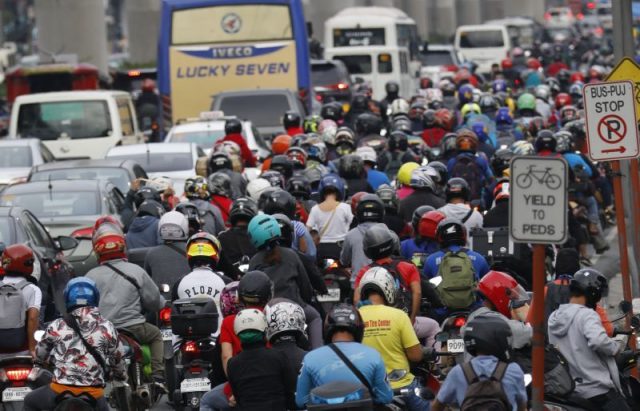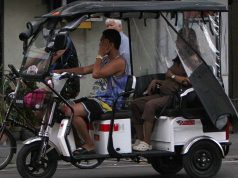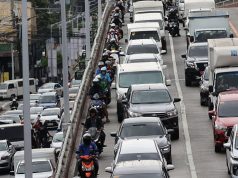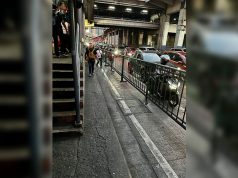
Commuters are worried that the curfew hours set to be imposed starting August 6 in Metro Manila as it enters another lockdown period will cause traffic jams and crowding in public transportation.
The curfew—from 8 p.m. to 4 p.m.—is meant to reduce people’s mobility to and from the capital region, which is now likely being threatened by the coronavirus Delta variant, said to be the “fastest and fittest” of the mutations so far.
Among the Filipino riding public are those who voiced out their concerns on social media.
They say the government-imposed cutoff on the road will force commuters to cram in limited transport and terminal spaces and will therefore increase their chances of getting infected with COVID-19.
“The shorter the period we are allowed outside, the denser the crowd would be inside the establishments,” a Twitter user said, suggesting a more potentially crowded indoor space.
“Tama, habaan ang curfew para mas magsiksikan mga tao sa establishments at pagsakay pauwi para lalo kumalat virus noh?” another online user wrote in response to the announcement.
A different Filipino suggested that store hours be extended instead.
“Extending the store hours actually helps in crowd control. Going out at a specific time creates crowding scenarios. Curfews are stupid,” the user tweeted.
Another social media user pointed out that the virus does not have a curfew and that its imposition is not an assurance that the COVID-19 cases would go down.
“Walang curfew ‘yung virus, ano na,” she wrote.
The scenario was similar in previous lockdowns accompanied by curfews. Commuters tend to want to beat the curfew and would try to get the earliest rides but, with hundreds of thousands of them, stations and terminals would get packed.
Crowding is risky since the virus causing COVID-19 can be transmitted through aerosols or respiratory droplets which can spread within 1 meter or farther, especially in crowded indoor settings or those with poor ventilation.
In the Philippines, people are advised to stay at least one meter away from each other, which is nearly equivalent to a motorcycle’s length.
According to Undersecretary Jonathan Malaya of the Department of Interior and Local Government, those considered authorized persons outside of residence (APOR) must present any of the following to border patrollers:
- IATF identification (ID) cards issued by regulatory agencies
- Valid IDs or pertinent documentation issued by establishments allowed to operate under the current quarantine classification
- Other proof or evidence that purpose of travel is allowed.
Those classified as APORs are health and emergency frontline services and uniformed personnel; government officials and employees on official travel; duly-authorized relief and humanitarian assistance actors; persons traveling for medical or humanitarian reasons; persons going to and from the airport; anyone crossing zones for work in permitted industries; and public utility vehicle operators.









